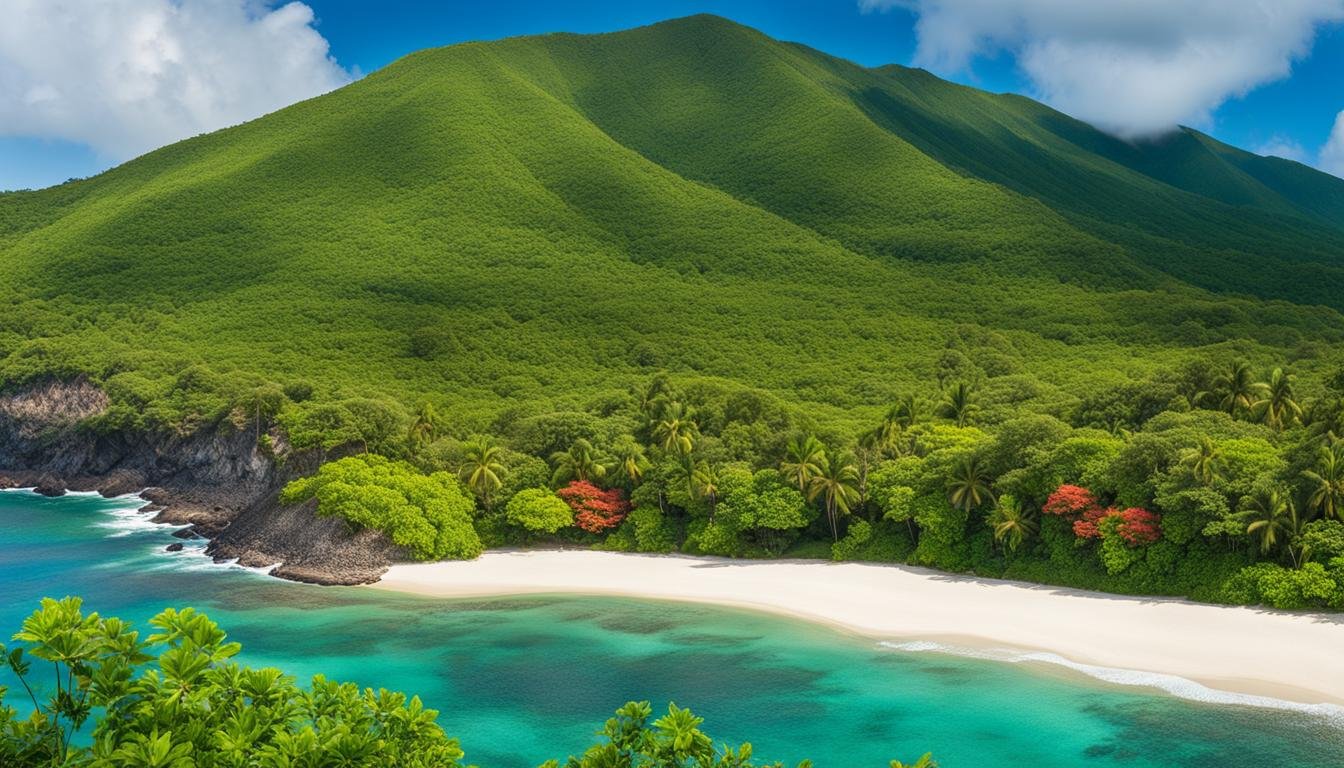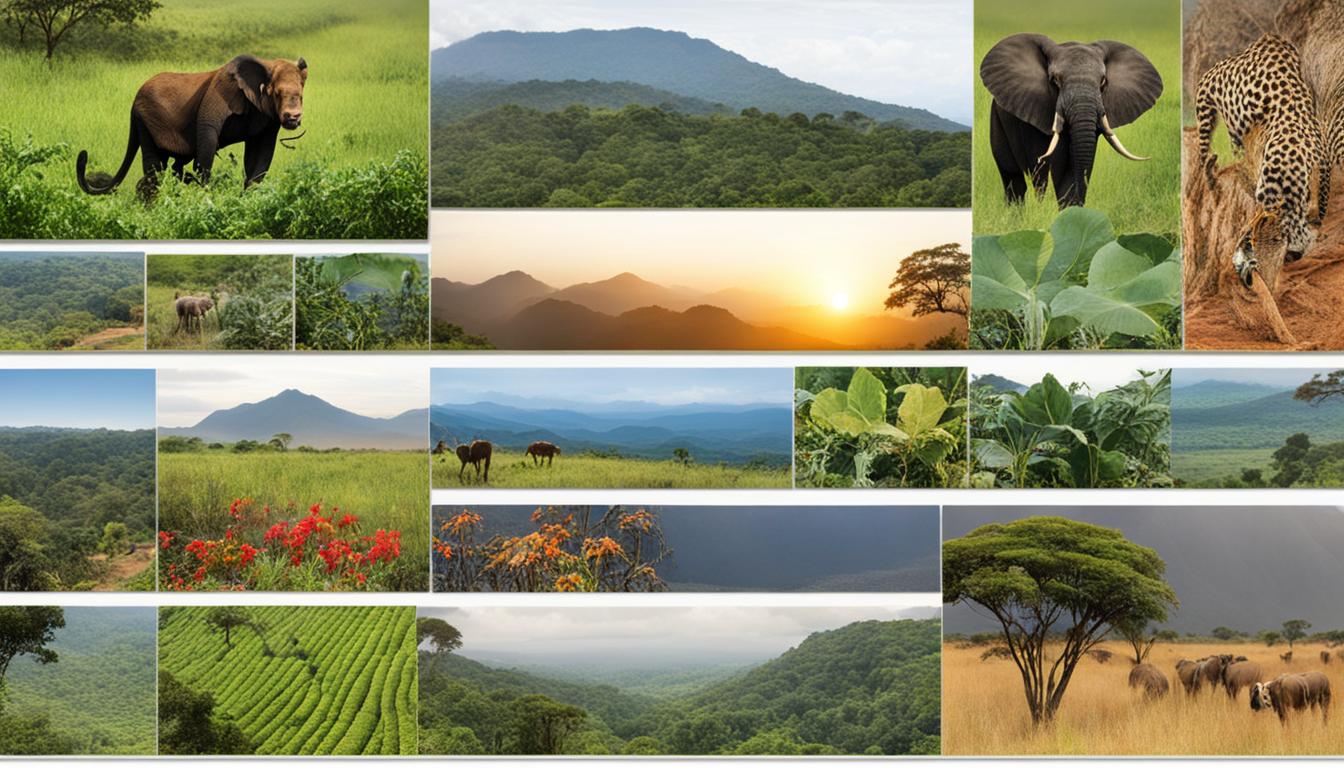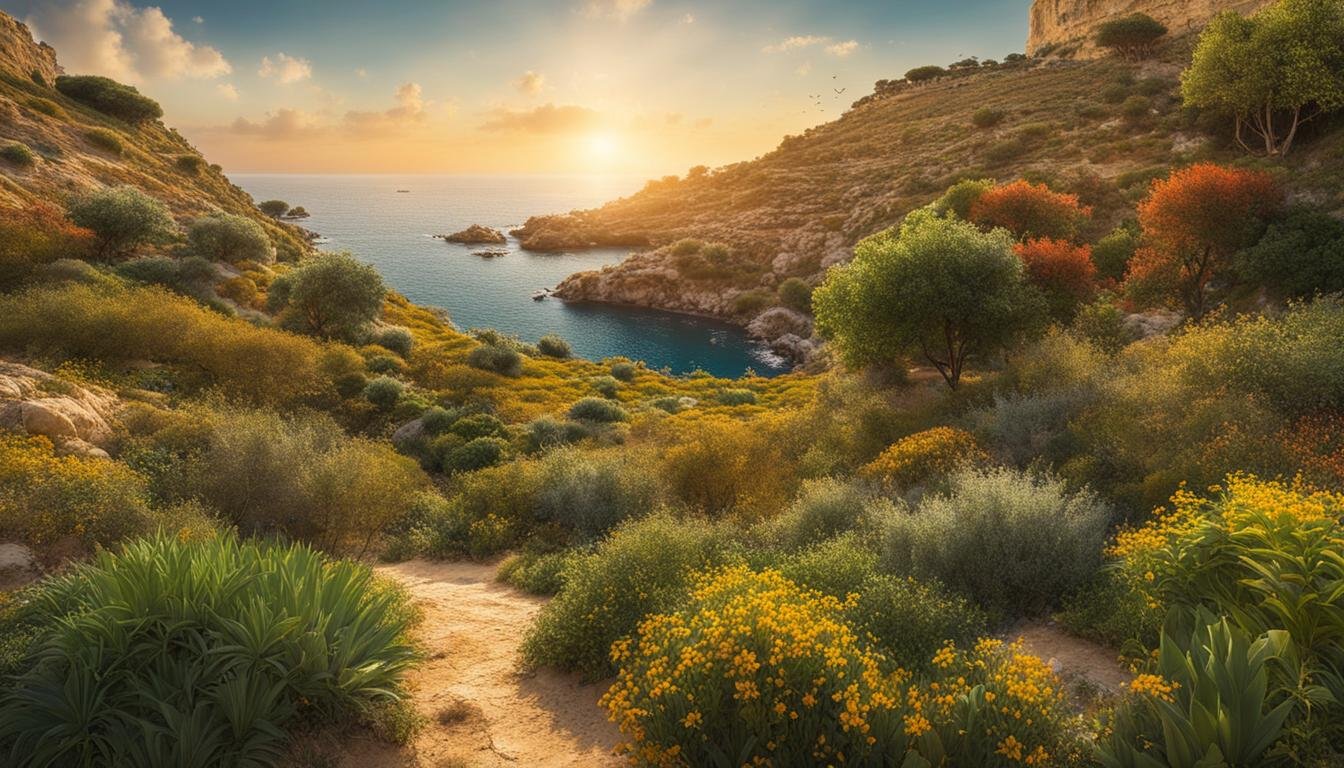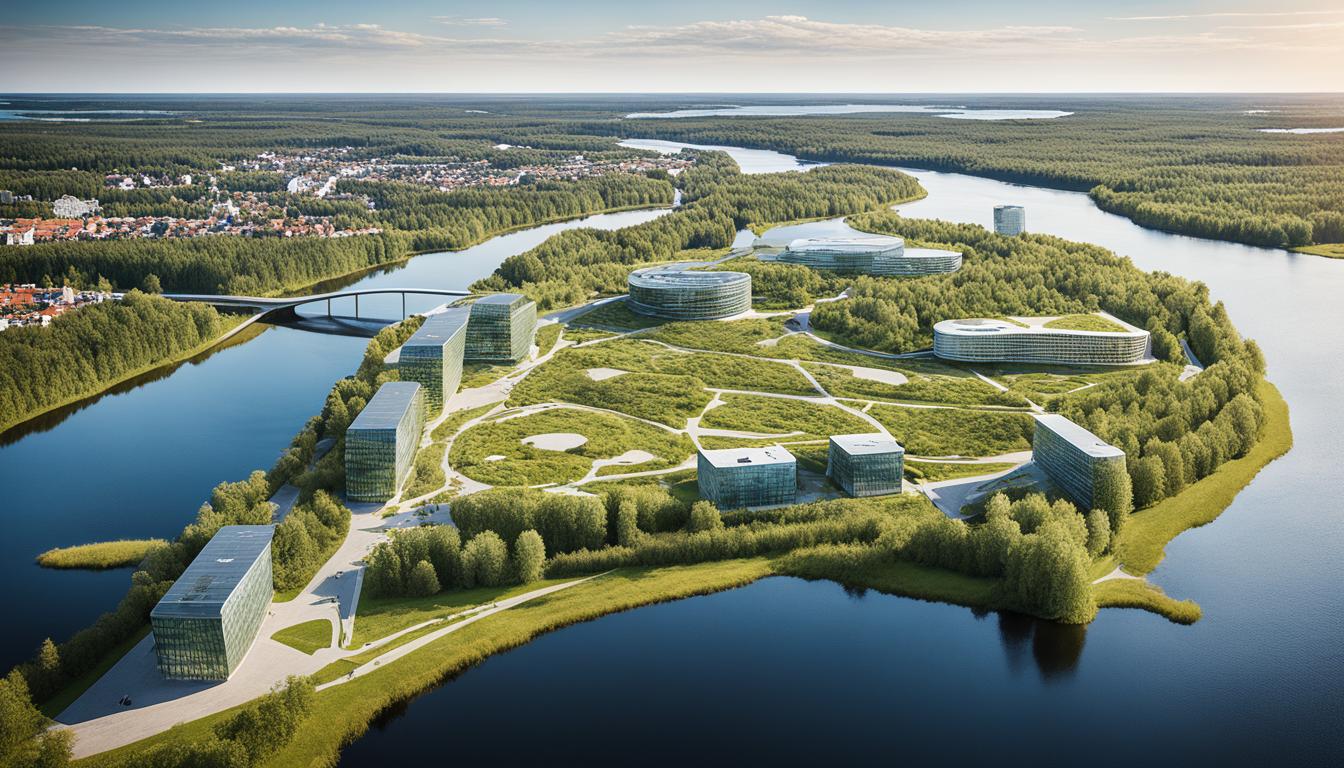Saint Lucia Biodiversity: Animal and Plant Species and What Is Under Threat
Saint Lucia is home to a diverse array of animal and plant species, making it a hotspot for biodiversity in the Caribbean. From the lush rainforests to the vibrant coral reefs, this tropical paradise boasts a rich tapestry of wildlife and flora and fauna. However, this precious biodiversity is under threat, facing challenges from habitat loss, climate change, and invasive species. In this article, we delve into the fascinating world of Saint Lucia’s biodiversity, exploring its unique ecosystems and shedding light on the pressing threats it faces.
Key Takeaways
- Saint Lucia is known for its diverse animal and plant species, making it a biodiversity hotspot in the Caribbean.
- The country’s unique ecosystems, such as rainforests and coral reefs, contribute to its rich biodiversity.
- Habitat loss, climate change, and invasive species pose significant threats to Saint Lucia’s biodiversity.
- Conservation efforts and sustainable practices are crucial for preserving the diverse flora and fauna of Saint Lucia.
- Protecting biodiversity not only ensures the survival of ecosystems and species but also promotes the long-term sustainability of key sectors like tourism and agriculture.
The National Biodiversity Strategy and Action Plan (NBSAP) of Saint Lucia
Saint Lucia recognizes the importance of conserving its diverse biodiversity and has implemented the National Biodiversity Strategy and Action Plan (NBSAP). The NBSAP, developed in 1997 and revised in 2008, serves as a comprehensive framework for biodiversity management, conservation, and sustainable use.
The NBSAP focuses on various key aspects, including:
- Planning and policy formulation: The NBSAP sets out strategic objectives and defines specific projects to be implemented.
- Research and monitoring: It emphasizes the importance of ongoing research and monitoring activities to assess the state of biodiversity and track progress.
- Conservation: The conservation of biodiversity and the protection of important habitats and species are central elements of the NBSAP.
- Sustainable use: The NBSAP promotes the sustainable use of natural resources, ensuring the long-term viability of ecosystems.
- Education and awareness: It highlights the significance of public education and awareness initiatives to foster a culture of biodiversity conservation among the population.
The NBSAP has achieved significant milestones, with 80% of the defined projects completed by 2010. It has played a crucial role in raising awareness, engaging stakeholders, and catalyzing action towards biodiversity conservation in Saint Lucia.
A draft revision of the NBSAP is currently being prepared to address emerging issues and align with international agreements and commitments. This demonstrates a commitment to continuously improve biodiversity management and ensure the sustainable future of Saint Lucia’s unique ecosystems.
| Year | Key Achievements |
|---|---|
| 1997 | Development of the initial NBSAP |
| 2008 | Revision of the NBSAP |
| 2010 | 80% completion of defined projects |
Protected Areas and Conservation Efforts
Saint Lucia has established several protected areas to safeguard its biodiversity. These include the Soufriere Marine Management Area, the Canaries/Anse La Raye Marine Management Area, and the Pitons Management Area, which is a World Heritage Site.
Protected areas in Saint Lucia are essential for the conservation of its rich biodiversity. They provide a sanctuary for diverse plant and animal species, ensuring their survival for future generations.
However, there is a need for improved management plans in some of these areas to ensure effective conservation practices. The Soufriere Marine Management Area, located in the heart of the Saint Lucia biodiversity hotspot, is home to vibrant coral reefs, seagrass beds, and mangrove forests. It is a critical habitat for numerous marine species, including endangered sea turtles and rare fish species.
The Canaries/Anse La Raye Marine Management Area, situated on the west coast of Saint Lucia, is known for its pristine coral reefs and seagrass meadows. It supports a wide range of marine life, including colorful tropical fish and rare invertebrates. Effective management and conservation efforts are necessary to protect these fragile ecosystems.
The Pitons Management Area, designated as a World Heritage Site, is famous for its iconic twin peaks, the Pitons. This area showcases the unique beauty and biodiversity of Saint Lucia, with lush rainforests, rare plant species, and endemic bird populations. Ongoing conservation measures are vital to preserve the ecological integrity of this renowned landmark.
Efforts have also been made to effectively manage and conserve the forest ecosystem in Saint Lucia. Over 10% of the forest is managed, providing habitat for numerous plant and animal species. Legal instruments, such as the Forest Management and Plant Protection Act and the Wildlife Protection Act, play a crucial role in supporting conservation efforts and regulating activities in protected areas.
Protected Areas in Saint Lucia
| Protected Area | Type | Habitat | Highlights |
|---|---|---|---|
| Soufriere Marine Management Area | Marine | Coral reefs, seagrass beds, mangroves | Endangered sea turtles, rare fish species |
| Canaries/Anse La Raye Marine Management Area | Marine | Coral reefs, seagrass meadows | Colorful tropical fish, rare invertebrates |
| Pitons Management Area | World Heritage Site | Rainforest, endemic species | Iconic Pitons, rare bird populations |
The establishment and proper management of protected areas in Saint Lucia demonstrate the commitment to conservation and the preservation of the country’s unique biodiversity.
Endangered Species in Saint Lucia
Several species in Saint Lucia have been classified as critically endangered according to the IUCN Red List. These include the Saint Lucia Whiptail (Cnemidophorus vanzoi), the Ornate Ground Snake (Erythrolamprus ornatus), and Semper’s Warbler (Leucopeza semperi). These species are at an extremely critical state and face a high risk of extinction in the wild.
Conservation efforts are urgently needed to protect these endangered species and their habitats. The loss of any of these unique species would be a significant loss to Saint Lucia’s biodiversity and ecosystem stability.
Efforts are being made to raise awareness about the importance of these species and to implement conservation measures to ensure they can thrive in their natural habitats.

Endangered Species in Saint Lucia
| Species | Common Name | Scientific Name |
|---|---|---|
| 1 | Saint Lucia Whiptail | Cnemidophorus vanzoi |
| 2 | Ornate Ground Snake | Erythrolamprus ornatus |
| 3 | Semper’s Warbler | Leucopeza semperi |
These endangered species must be prioritized in conservation efforts, as they are integral to the overall health and functioning of Saint Lucia’s ecosystems. By implementing effective conservation strategies and collaborating with local and international partners, there is hope for the recovery and preservation of these species for future generations.
Implementation and Support Mechanisms for Biodiversity Conservation
Biodiversity concerns are integrated into the agendas of various government departments in Saint Lucia, including the Ministries of Sustainable Development, Energy, Science and Technology, and Agriculture. These departments recognize the importance of preserving and protecting the diverse ecosystems and species within the country. Through their collaborative efforts, they are implementing key strategies and initiatives to ensure the conservation of Saint Lucia’s unique biodiversity.
One crucial aspect of biodiversity conservation is the establishment of legislation and policies. The government has enacted laws and regulations that aim to safeguard natural resources and protect threatened species. This legislation provides a legal framework for biodiversity conservation and sets the foundation for effective implementation.
Funding is also essential for the successful implementation of biodiversity conservation projects. The government of Saint Lucia, along with international partners, allocates financial resources to support conservation efforts. This funding enables various initiatives, including research, habitat restoration, and species protection, to be carried out effectively.
In addition to legislation and funding, capacity-building plays a vital role in biodiversity conservation. Training programs and workshops are conducted to enhance the skills and knowledge of individuals working in the field of conservation. By empowering local communities and professionals with the necessary expertise, capacity-building efforts contribute to the effective management and sustainable use of biodiversity resources.
“Coordination and mainstreaming of biodiversity issues across key economic sectors are crucial for the long-term conservation of Saint Lucia’s biodiversity.”
Effective coordination among various stakeholders is essential to ensure the efficient implementation of biodiversity conservation projects. Collaboration between government agencies, non-governmental organizations, and local communities facilitates the exchange of information, resources, and expertise, enabling a more holistic approach to biodiversity conservation.
Mainstreaming biodiversity issues into key economic sectors is another crucial aspect of conservation. By integrating biodiversity considerations into sectors such as agriculture and tourism, sustainable practices are promoted, reducing the negative impacts on ecosystems and species.
Efforts are underway to develop a Biosafety Framework and Biosafety Policy in Saint Lucia. These initiatives aim to ensure the safe handling and use of genetically modified organisms (GMOs) while minimizing potential risks to biodiversity and human health. By implementing effective biosafety measures, Saint Lucia demonstrates its commitment to responsible and sustainable practices.
Through the implementation of legislation, funding support, capacity-building efforts, coordination, and mainstreaming, Saint Lucia is actively working towards the conservation and protection of its unique biodiversity. These mechanisms provide a strong foundation for continued efforts to ensure the long-term sustainability of the country’s natural heritage.
Monitoring and Reviewing Implementation of Biodiversity Conservation
Saint Lucia has established effective mechanisms for monitoring and reviewing the implementation of biodiversity conservation efforts. In order to assess the current state of Saint Lucia’s biodiversity, the Sustainable Development and Environment Unit of the country has published a comprehensive State of the Environment Report. This report includes a detailed assessment of key ecosystems, highlighting their status, trends, and potential threats.
Furthermore, the Department of Fisheries has upgraded its marine biodiversity database, which allows for better tracking and understanding of marine species and their habitats in Saint Lucia. Additionally, the Organization of Eastern Caribbean States (OECS) has developed a regional biodiversity database, with Saint Lucia serving as the pilot for this initiative. This database enhances the overall monitoring and assessment of biodiversity conservation efforts in the wider Caribbean region.
These monitoring and reviewing initiatives provide valuable insights into the effectiveness of biodiversity conservation measures in Saint Lucia. By analyzing the data and information gathered through these efforts, policymakers and conservationists can make informed decisions and implement targeted strategies to address conservation challenges and strengthen the protection of Saint Lucia’s unique biodiversity.

| Benefits of Monitoring and Reviewing Implementation | Challenges in Monitoring and Reviewing |
|---|---|
|
|
Threats to Saint Lucia’s Biodiversity
Despite conservation efforts, Saint Lucia’s biodiversity faces numerous threats. Habitat loss due to urbanization, agricultural expansion, and infrastructure development is one of the major threats. Climate change poses challenges to the survival of certain species and ecosystems, including coral reefs and mangroves. Invasive alien species also threaten native plants and animals by outcompeting or preying on them. These threats require immediate action to ensure the protection and conservation of Saint Lucia’s unique biodiversity.

| Threats | Description |
|---|---|
| Habitat Loss | Urbanization, agricultural expansion, and infrastructure development are leading to the destruction and fragmentation of natural habitats in Saint Lucia. This directly impacts the biodiversity by reducing available living space for plants and animals. |
| Climate Change | Rising temperatures, changing rainfall patterns, and increased frequency of extreme weather events pose significant challenges to the survival of certain species and ecosystems in Saint Lucia. Coral reefs and mangroves, for example, are particularly vulnerable to the impacts of climate change. |
| Invasive Species | Invasive alien species, both plants and animals, pose a serious threat to the native biodiversity of Saint Lucia. These species often outcompete native species for resources, disrupt natural ecosystems, and prey on native plants and animals. |
Importance of Biodiversity in Saint Lucia’s Economy and Culture
Biodiversity is a critical component of Saint Lucia’s economy and culture. The country’s agriculture, tourism, and fisheries sectors heavily rely on the health and diversity of its ecosystems, as well as its unique plant and animal species. Sustainable management and conservation of biodiversity are essential for the long-term sustainability of these sectors, as well as for preserving the cultural and natural heritage of Saint Lucia.
In the agricultural sector, biodiversity plays a crucial role in maintaining soil fertility, pollination, and natural pest control. The diverse range of crops and agricultural practices in Saint Lucia, such as banana plantations, cocoa farms, and spice production, not only contribute to the local economy but also showcase the rich cultural traditions associated with agriculture.
Tourism, another vital sector in Saint Lucia, relies on the country’s diverse ecosystems and natural attractions. The lush rainforests, vibrant coral reefs, and stunning landscapes attract visitors from around the world. Biodiversity is the foundation of ecotourism, allowing travelers to explore and appreciate the natural beauty of the island while supporting local communities.
Fisheries, both marine and inland, depend on healthy aquatic ecosystems and diverse fish populations. Sustainable fishing practices and the protection of critical habitats are necessary to ensure the long-term viability of this sector. The unique marine biodiversity of Saint Lucia, including its colorful coral reefs, supports recreational and commercial fishing activities, preserving traditional fishing practices and cultural heritage.
Beyond its economic contributions, biodiversity shapes the cultural identity and natural heritage of Saint Lucia. The diverse species and ecosystems found on the island inspire local art, music, and storytelling. They are woven into the fabric of everyday life, celebrations, and festivals, reinforcing the close connection between the people of Saint Lucia and their natural surroundings.
To sustain the economic and cultural benefits associated with biodiversity, it is crucial to adopt sustainable practices, conserve habitats, and protect endangered species. By recognizing the value of biodiversity and integrating it into decision-making processes, Saint Lucia can secure a brighter future for its economy, culture, and natural heritage.

Conservation Initiatives and Projects in Saint Lucia
Various conservation initiatives and projects are being undertaken in Saint Lucia to protect and conserve its biodiversity. These initiatives aim to:
- Conduct comprehensive inventories of both terrestrial and marine biodiversity to understand the species composition and distribution.
- Assess and manage the wetlands, which are essential habitats that support a wide range of plant and animal species.
- Evaluate the medicinal and culinary properties of herbs found in Saint Lucia, promoting sustainable use and conservation of traditional knowledge.
- Establish management programs specifically designed for the protection and preservation of endemic and rare species of birds and turtles.
- Implement education and awareness programs to engage the public in biodiversity conservation efforts, promoting a sense of stewardship and responsibility.
These conservation initiatives and projects ensure the effective management and conservation of Saint Lucia’s rich biodiversity, which is crucial for maintaining healthy ecosystems and safeguarding the future of the country’s unique wildlife and habitats.

Examples of Conservation Initiatives and Projects in Saint Lucia
| Initiative/Project | Description |
|---|---|
| Comprehensive Biodiversity Inventories | Gathering data on the species composition and distribution of both terrestrial and marine biodiversity in Saint Lucia. |
| Wetland Assessment and Management | Evaluating the health and ecological importance of wetland habitats and implementing management strategies for their conservation. |
| Herb Evaluation for Medicinal and Culinary Purposes | Exploring the potential uses of local herbs in traditional medicine and culinary practices while ensuring their sustainable harvest. |
| Management Programs for Endemic and Rare Species | Developing targeted conservation programs to protect and preserve the unique birds and turtles found only in Saint Lucia. |
| Education and Awareness Programs | Engaging the public through educational initiatives to raise awareness about biodiversity conservation and foster a sense of responsibility towards nature. |
Challenges and Opportunities for Biodiversity Conservation in Saint Lucia
Biodiversity conservation in Saint Lucia faces a range of challenges that need to be addressed to ensure the long-term sustainability of the island’s unique ecosystems and species. These challenges include limited resources, land-use conflicts, and the need for stronger legislation and enforcement. Despite these hurdles, there are also promising opportunities for conservation efforts to thrive.
One key opportunity lies in the integration of biodiversity conservation into sustainable development strategies. By recognizing the value of preserving biodiversity in the pursuit of economic and social progress, Saint Lucia can create a harmonious balance between environmental protection and human well-being.
Eco-tourism offers another avenue for biodiversity conservation. Promoting and supporting sustainable tourism practices can generate income for local communities while safeguarding the natural resources and habitats that draw visitors to the island.
Furthermore, involving local communities in conservation efforts can create a sense of ownership and empowerment. By building capacity and providing education and training, Saint Lucia can empower individuals and communities to actively participate in protecting their natural surroundings.
Collaborative partnerships among government entities, non-governmental organizations, and local communities are essential in overcoming the challenges and seizing these opportunities. By pooling resources, sharing knowledge, and implementing best practices, stakeholders can create a more effective and coordinated approach to biodiversity conservation in Saint Lucia.
Major Challenges and Opportunities for Biodiversity Conservation in Saint Lucia
| Challenges | Opportunities |
|---|---|
| Limited resources | Integration of biodiversity into sustainable development strategies |
| Land-use conflicts | Promotion of eco-tourism |
| Weak legislation and enforcement | Involvement of local communities in conservation efforts |
Addressing these challenges and capitalizing on the opportunities will require a collective effort and a commitment to sustainable development. By prioritizing biodiversity conservation and fostering partnerships, Saint Lucia can ensure a thriving ecosystem and a future where nature and society coexist harmoniously.

International Cooperation for Biodiversity Conservation in Saint Lucia
Saint Lucia actively engages in international cooperation for biodiversity conservation. The country is a contracting party to several multilateral environmental agreements, including the Convention on Biological Diversity, Ramsar Convention, and World Heritage Convention.
These agreements provide a framework for collaboration and sharing of best practices with other countries. Through international cooperation, Saint Lucia is able to exchange knowledge and experiences, as well as develop joint initiatives to address common challenges in biodiversity conservation.
In addition to participating in global agreements, Saint Lucia also plays an active role in regional initiatives and projects dedicated to enhancing biodiversity conservation in the Caribbean region. Through collaboration with neighboring countries, Saint Lucia is able to work towards the shared goal of preserving and protecting the unique ecosystems and species found within the region.
International cooperation plays a crucial role in addressing global biodiversity challenges. By working together, countries can pool their resources, expertise, and technologies to achieve effective conservation outcomes. Collaboration allows for the development of comprehensive strategies and the implementation of coordinated actions that are essential for the protection and sustainable use of biodiversity.

Conclusion
Saint Lucia’s biodiversity is a treasure that must be protected and conserved for the benefit of future generations. Through the implementation of the National Biodiversity Strategy and Action Plan and various conservation initiatives, the country has taken significant steps to preserve its unique ecosystems and species. However, ongoing efforts are necessary to address the challenges posed by habitat loss, climate change, and invasive species.
To ensure the long-term sustainability of Saint Lucia’s biodiversity and preserve its natural heritage, it is crucial to promote sustainable development practices. Engaging local communities in conservation efforts and collaborating internationally are also vital in achieving these goals. By working together and supporting initiatives that prioritize biodiversity conservation, Saint Lucia can secure a prosperous and sustainable future for its diverse flora and fauna.
Continued commitment to conservation efforts will not only protect Saint Lucia’s biodiversity, but also contribute to the country’s economy and culture. Agriculture, tourism, and fisheries sectors heavily rely on the health of the ecosystems and the rich diversity of plants and animals. Sustaining biodiversity will safeguard the country’s natural resources and preserve its cultural identity, ensuring the long-term prosperity and well-being of its people.
Looking ahead, it is imperative to prioritize the conservation of Saint Lucia’s biodiversity and take proactive measures in the face of future challenges. By building on the achievements of current initiatives and fostering international collaborations, Saint Lucia can secure a resilient and sustainable future for its invaluable natural resources and maintain its status as a biodiversity hotspot.
FAQ
What is Saint Lucia’s biodiversity known for?
Saint Lucia is known for its rich biodiversity, with diverse animal and plant species found in its unique ecosystems.
What are the major threats to Saint Lucia’s biodiversity?
The major threats to Saint Lucia’s biodiversity include habitat loss, climate change, and invasive species.
What is the National Biodiversity Strategy and Action Plan (NBSAP) of Saint Lucia?
The NBSAP is a plan developed by Saint Lucia to conserve its biodiversity and promote sustainable use of its resources.
What are some protected areas in Saint Lucia?
Some protected areas in Saint Lucia include the Soufriere Marine Management Area, the Canaries/Anse La Raye Marine Management Area, and the Pitons Management Area.
Which species in Saint Lucia are classified as critically endangered?
The Saint Lucia Whiptail, Ornate Ground Snake, and Semper’s Warbler are classified as critically endangered species in Saint Lucia.
What support mechanisms are in place for biodiversity conservation in Saint Lucia?
Support mechanisms for biodiversity conservation in Saint Lucia include legislation, funding, capacity-building, coordination, and mainstreaming biodiversity issues into key economic sectors.
How is the implementation of biodiversity conservation monitored in Saint Lucia?
The implementation of biodiversity conservation in Saint Lucia is monitored through initiatives such as the State of the Environment Report and regional biodiversity databases.
What are the main threats to Saint Lucia’s biodiversity?
The main threats to Saint Lucia’s biodiversity include habitat loss, climate change, and invasive species.
How does biodiversity contribute to Saint Lucia’s economy and culture?
Biodiversity plays a vital role in sectors such as agriculture, tourism, and fisheries, as well as contributing to the country’s natural and cultural heritage.
What conservation initiatives and projects are being undertaken in Saint Lucia?
Conservation initiatives in Saint Lucia include inventories of biodiversity, wetland management, evaluation of medicinal and culinary properties of herbs, and the protection of endemic and rare species.
What are the challenges and opportunities for biodiversity conservation in Saint Lucia?
Challenges for biodiversity conservation in Saint Lucia include limited resources and land-use conflicts, while opportunities include sustainable development strategies and community involvement.
How does Saint Lucia engage in international cooperation for biodiversity conservation?
Saint Lucia is a contracting party to various multilateral environmental agreements, which provide a framework for collaboration and sharing of best practices.









Dan Rafuse
2 years agoThank you for the thorough article and information regarding the risks that not only St.Lucia’s natural ecosystem is exposed to, but so many naturally beautiful places. My Wife and I recently spent a week in Costa Rica, which has an extensive amount of biodiversity. There are many beautiful dry and wet forests to visit. However, due to a huge influx of immigrants traveling and retiring to Costa Rica, much of it’s biodiversity is at severe risk and a large portion, on the West coast, has already been removed to make room for subdivisions and retirement homes. Very sad.
My family and I are heading to Saint Lucia in March 2024 and I stumbled across this article. I had a question regarding the background photo at the top of this page and the same one just, above the painted/CGI picture, above the title “International Cooperation for Biodiversity Conservation in Saint Lucia”.
Thanks,
Dan
Is this a real view in Saint Lucia? It looks too good to be true almost.
Jackie De Burca
2 years agoHi Dan,
It is great to get your perspective on this. It is very sad indeed.
We do use AI for some of our images, so that might explain that!!
Have a great trip. If you wish to write about these aspects of these places, we are open to guest authors.
Thanks
Jackie